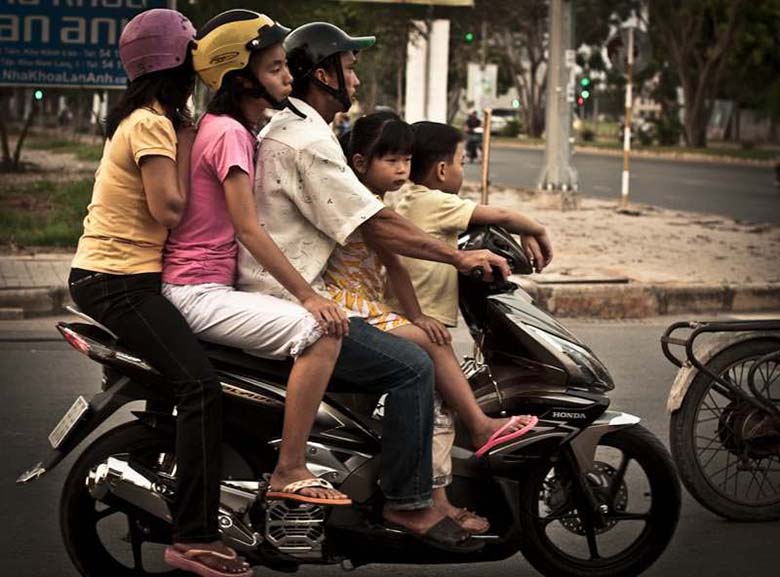How to ride a motorbike in Vietnam (and not end up in the hospital)
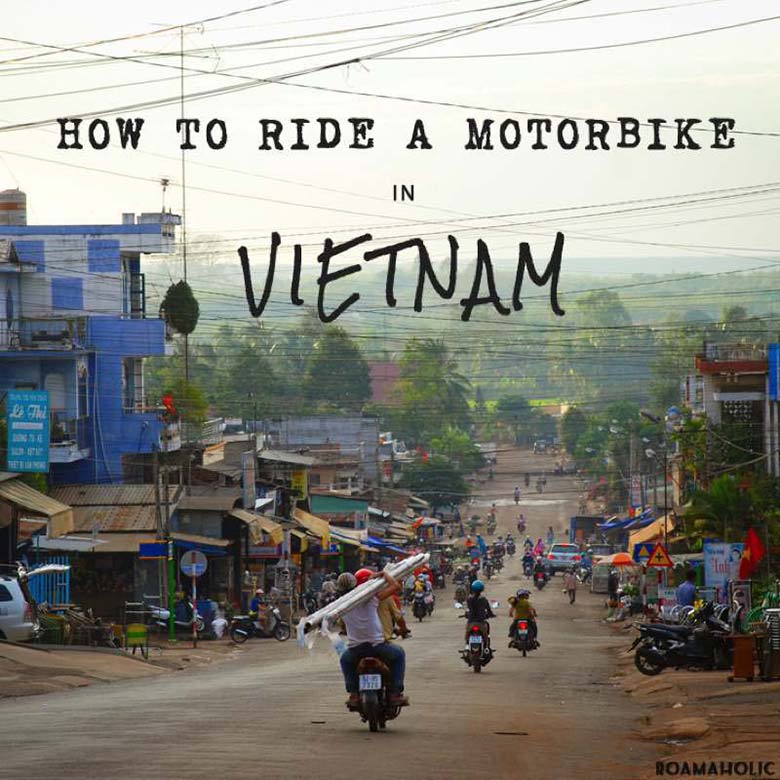 You may think I’m joking about the hospital . . . but I’m not.
You may think I’m joking about the hospital . . . but I’m not.
An expat friend in Hoi An ended up in a coma for 8 weeks after a motorbike accident. Another friend hit a curb, flew into a river, and landed himself in the hospital. We saw our lives flash before our eyes when someone pulled out in front of us on a busy highway without looking.
Needless to say, the roads in Vietnam are dangerous.
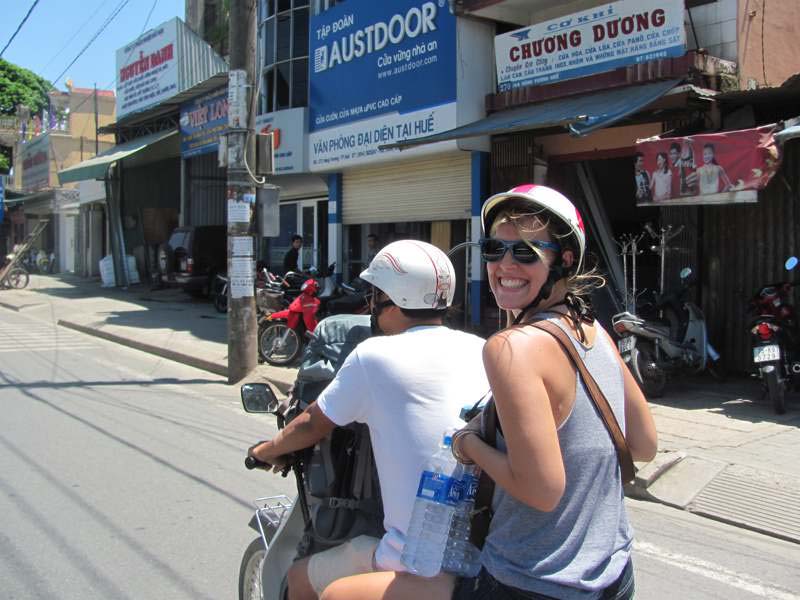
No more taxis!
What is So Crazy About It?
If your introduction to Vietnam is via Hanoi or Saigon, you may find yourself utterly perplexed wanting to get from one side of a street to the other by foot.
There are So many motorbikes zipping around that you have to walk slowly but surely, allowing the motorbikers to (hopefully) dodge around you. If you stand around waiting for them to stop for pedestrians to cross, you’ll be waiting a long time.
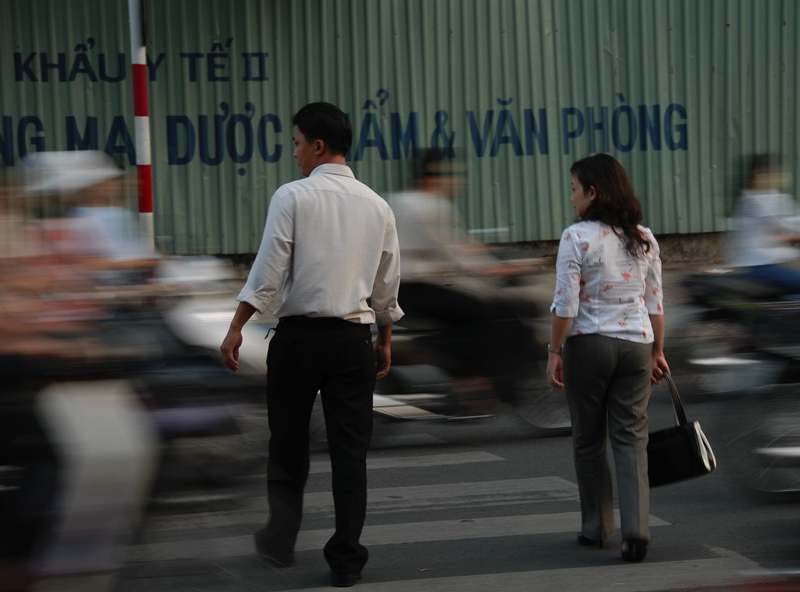 TIP: follow closely behind someone who looks like they know what they’re doing.
TIP: follow closely behind someone who looks like they know what they’re doing.
The Vietnamese will carry an entire house (plus their three children and dog) on the back of their bikes if they can. I’m always amazed at how they don’t tip over.
 That would be an annoying mess to clean up.
That would be an annoying mess to clean up.
Traffic law is practically non-existent. It’s not that scary once you get the hang of it, but you might want to get a feel for how it works before setting off on your own.
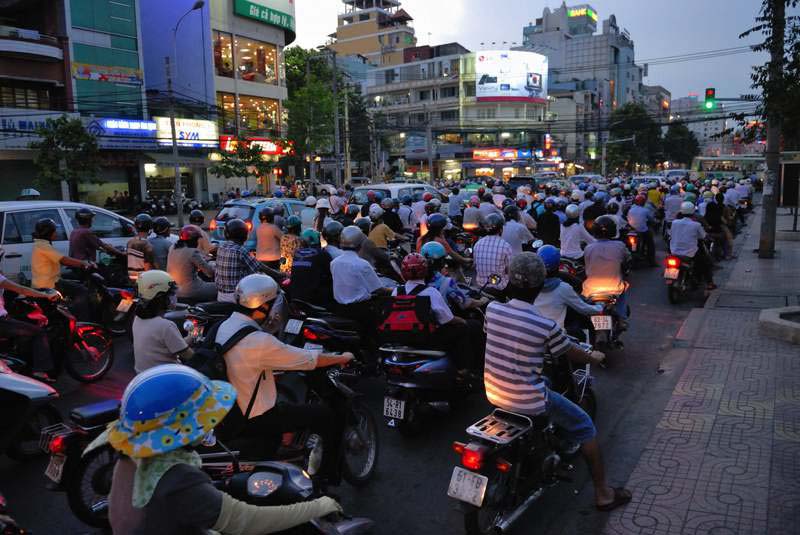 It can be intimidating at first.
It can be intimidating at first.
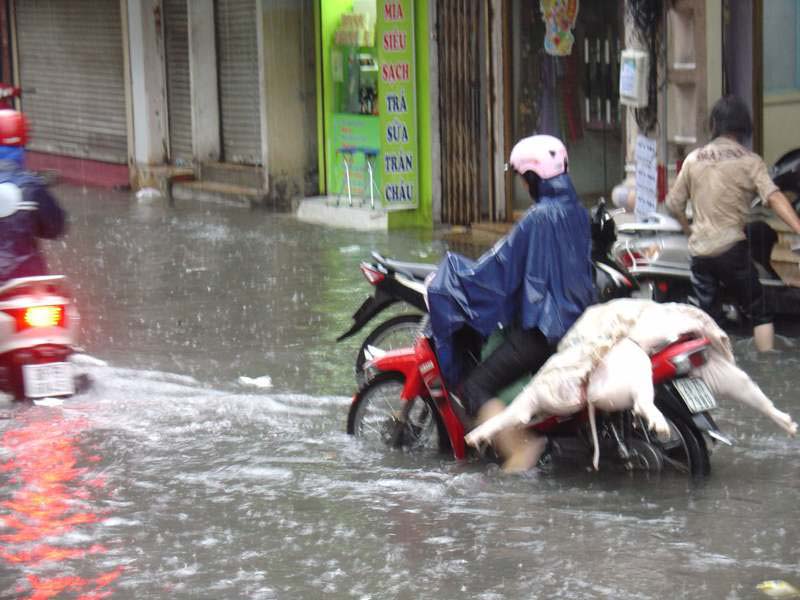 But in no time you’ll be riding like a local.
But in no time you’ll be riding like a local.
Rules of the Road
#1. There are no rules. Everything you know about official road rules is out the window, none of them seem to be practiced here. It’s not uncommon so see someone flying down a one-way street going the wrong way.
#2. Helmets. Okay, there is one rule – helmets are actually mandatory, although the only real reason you will get stopped for not having one is so that traffic enforcement can get a pay-day.
Most of the helmets for rent are made out of very cheap plastic with a thin layer of foam on the inside. My rental cracked when I dropped it on the ground – no joke. Try to get your hands on an actual motorcycle helmet if you plan on doing much driving. It is my strong belief that you’re more likely to end up with a piece of plastic lodged in your skull than any sort of ‘protection’ from these helmets.
You’ll also notice many locals not buckling their chin straps. What is the point of that? For your own sake people, do up your helmets!
 Don’t forget to do up your brain bucket!
Don’t forget to do up your brain bucket!
#3. Traffic lights. Although they do have traffic lights in Vietnam, they tend to be more precautionary than mandatory. If you stop, someone might ram you from behind. If you go, someone might ram you from the side. Generally you need to slow down, look both ways, and proceed with caution – no matter the colour of the light. The key here is to go with the flow.
#4. Giving way. If you need to turn or change ‘lanes’ (there really are no lanes), don’t expect someone to kindly slow down and give you way. It may happen that you have five other motorbikes on your right-hand side and you need to turn right, so what do you do? Your timing skills will be put to the test, but you basically need to just look over your shoulder and go for it – timing it just right to avoid t-boning them, slipping in front or behind in one swift motion.
#5. Intoxication. You can get on your bike while blackout drunk in Vietnam and realistically nobody is going to do anything about it, especially in more rural areas. Should you? Never. Don’t do something you wouldn’t do in your own country, you know better. On that note, the drinking and driving rate in Vietnam is very high so be aware that other drivers are a threat and keep your eyes peeled.
#6. Speeding. The average speed limit is around 25-60km/h, try to stay within it. There will often be pot holes, animals to avoid, oil spills from trucks, dirt roads and debris on the road, so you need to be in control at all times. Use your common sense, know your limits, and don’t end up another statistic for the sake of an adrenaline rush.
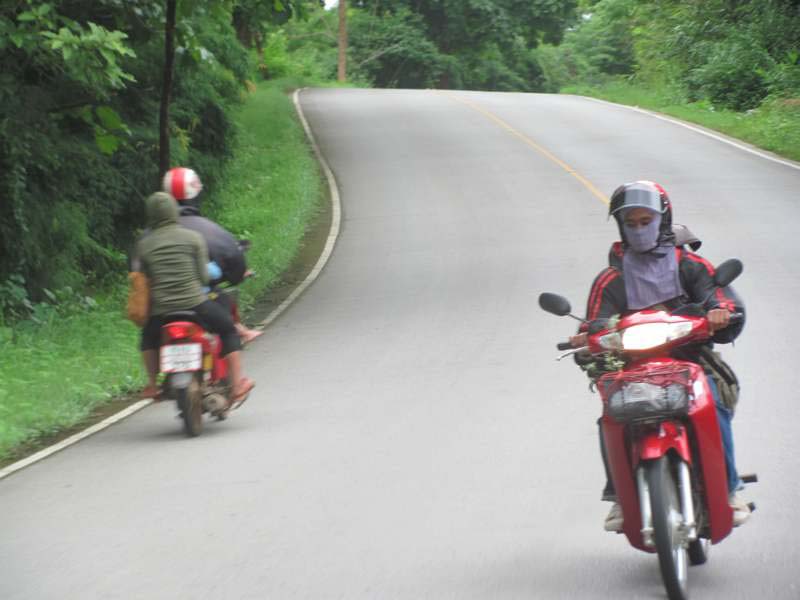 Slow and steady . . .
Slow and steady . . .
#7. Parking. From my experience driving in Hoi An, there are often designated parking ‘lots’. The Vietnamese running the lots will charge you significantly more (like, a couple bucks) for parking than a local, but there is nothing you can do about it. Arguing and bargaining will get you nowhere, they have the upper hand here. If you ignore them and park in an undesignated area, you may get towed – I did, and can you imagine the hassle of wandering the Vietnamese streets trying to find their impound lot?
#8. Passengers. I’m sure you can deduce from the photos that there is no limit to your passenger count so the smaller you are, the better. Your load is not limited to people either; chickens, pigs, buffalo, you name it – if you can get it one your motorbike, it’s fair game. Obviously packing on several people to one motorbike is not as comfortable (or safe) as the Vietnamese make it out to be, so try to limit yourself to two people.
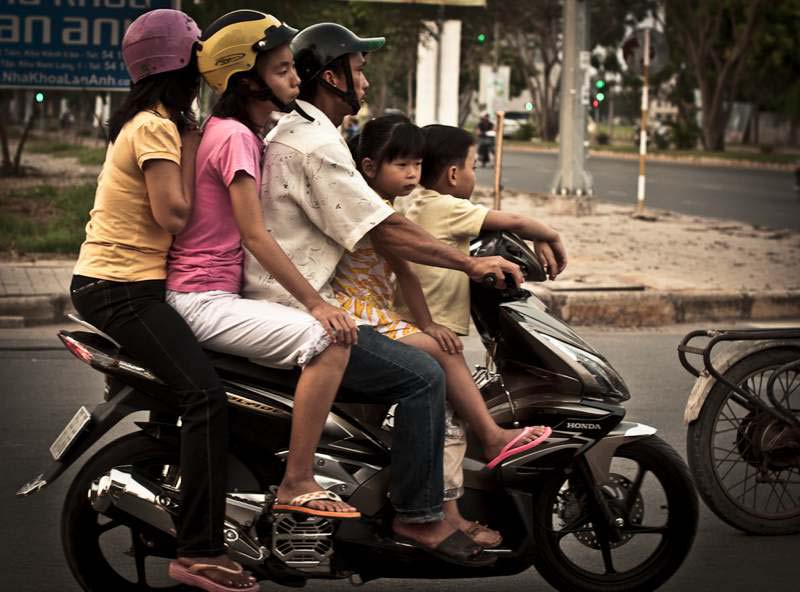 Surely they make child-sized helmets?
Surely they make child-sized helmets?
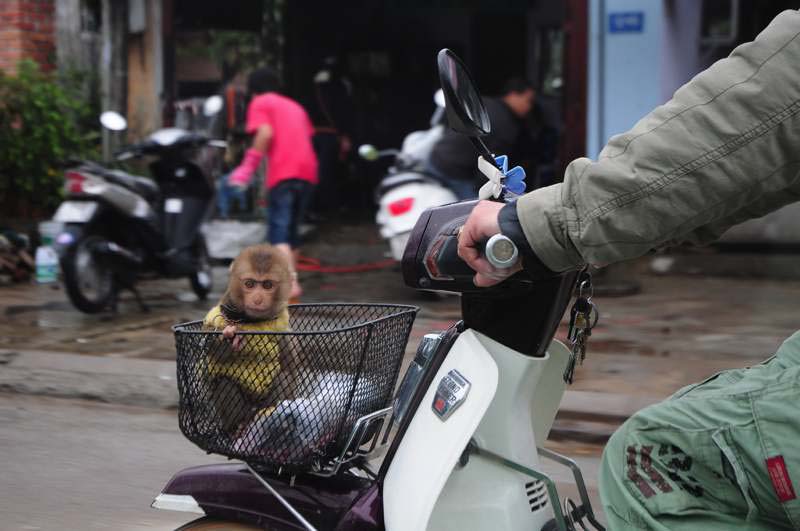 Even monkeys like to go for a ride.
Even monkeys like to go for a ride.
Getting on a Motorbike
Most people don’t want to commit to buying a motorbike for a short visit, so renting is a great option. In Hoi An there are people renting motorbikes on every street, so shop around to find a good deal. Usually it will cost around $2-5 a day and if you look hard enough you can get a monthly rate as low as $25.
If you’re wary of navigating the streets alone, but want to get out of the city, you can do an off-road motorcycle tour through rural Vietnam. Although I never did one of these myself, a good friend of mine worked for Hoi An Motorbike Adventures and loved it. They run tours for all levels of riders and you can choose from a variety of tailor-made tours lasting from half a day to a week. You get to ride through villages and see the real Vietnam you may not experience otherwise, with the comfort of having a guide. There are many other companies running motorcycle tours, but I’ve heard great things about this one through several people.
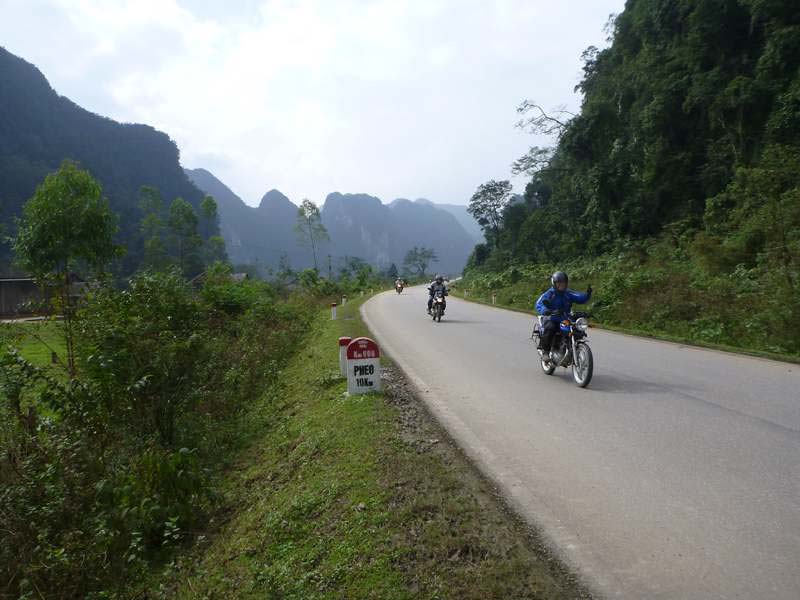 You may just have the ride of a lifetime.
You may just have the ride of a lifetime.
Still Wary?
For those that prefer something a bit calmer, Steve at the Sleepy Gecko runs bicycle tours from his bar in Hoi An. He’ll take you out into rural Hoi An where you wouldn’t know to go on your own. Steve is an awesome dude with plenty of amazing stories who traveled from the UK to Australia by foot in the 70s (and met the creators of Lonely Planet along the way – before it was ever published). His bicycle tours are the perfect two-wheeled adventure for the motorbike-phobic.
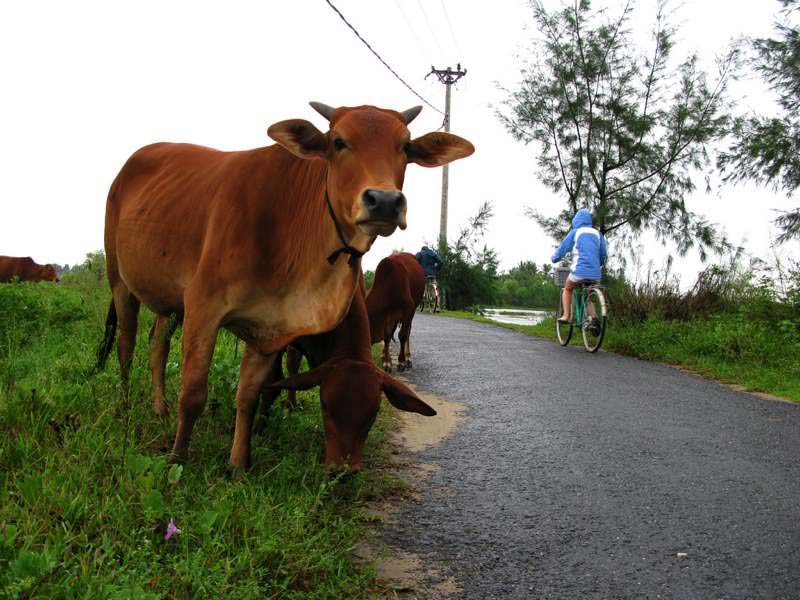 Bike tours are great if you have children as well.
Bike tours are great if you have children as well.
Final Thoughts
If we were to visit Vietnam again, we would probably opt to long-term rent or buy a motorbike to explore the country more thoroughly. In my opinion having your own wheels is one of the best ways to discover somewhere new and get off the beaten tourist path.
My experience riding a motorbike was limited to Hoi An, Danang, and the surrounding area of central Vietnam. Personally, I wouldn’t want to ride through the streets of Hanoi or Saigon unless I really knew where I was going, navigating the streets of Danang was hard enough (and I’m a good navigator). I couldn’t read the street signs or map and was left guessing and approximating most of the time. With all the commotion it’s hard to stop to find out where you’re going, let alone turn around or ask for directions.
If you’re eager to explore the country by motorbike, go for it! Just don’t ignore your common sense because the road rules are more lenient – safety should always be a top priority. You don’t want to cut your trip short because you need to fly home for proper medical care.
 You don’t get to ride like this at home!
You don’t get to ride like this at home!
Do you have any crazy motorbike stories from Southeast Asia? Are you eager to set-out on a two-wheeled adventure?

